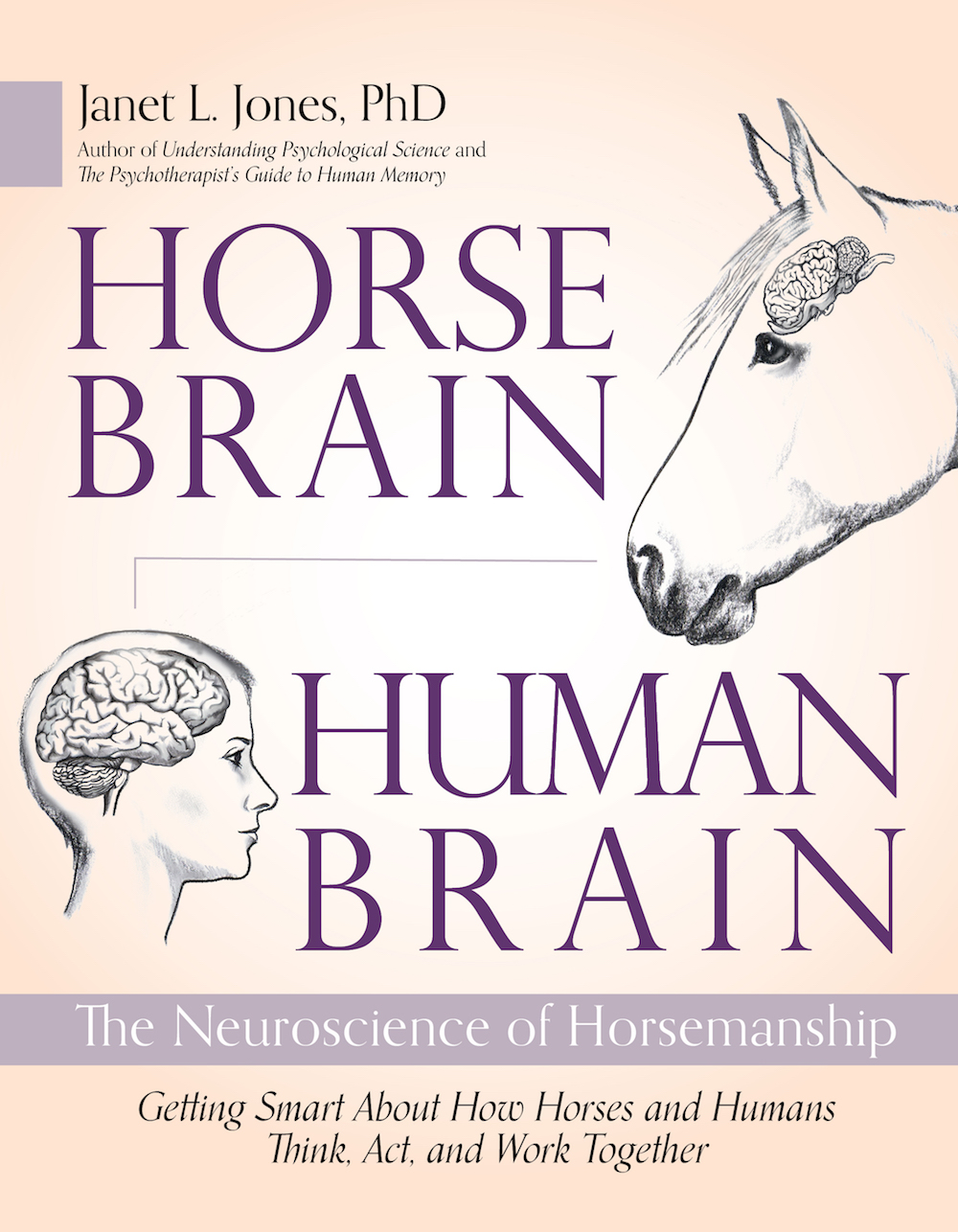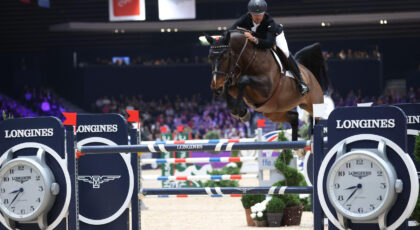In the past couple weeks, I’ve described my green Warmblood True’s progress with the lessons on my training agenda.
But maybe the most fun to consider is his training agenda—all the stuff he’s learned without my help. Like his new lockpicking skills, for example.
As you know, True lives with one other horse in a six-acre pasture with a big shelter that they share. There’s a small fenced run attached to each side of the shelter, and a fence down its center, to keep two horses apart when necessary. The center fence contains a gate.
One day, I arrived to find the gate open and both horses in the same side of the shelter. No worries, these boys get along well. Somebody must have left the gate open accidentally when feeding hay or cleaning the runs. I latched it.
An hour later, it was unlatched again.
Well, that’s weird. I latched it then tied a lead rope around the two gate posts.
An hour later, the lead rope was lying unknotted in the dirt, and the gate was unlatched again. Uh-oh. Somebody suggested tying it with baling twine—too narrow and slick for a horse to maneuver. It didn’t stop True for a second.
It seems Little Boy Blue had learned to unlatch the gate. Now, let me take a moment and describe this latch to you. It’s a doozy for Lockpicking 101. To open it, a human takes hold of a small horseshoe-shaped oval handle and turns that handle upwards by 90 degrees. Then, while holding it in that upward position, the human slides the handle and attached metal bar to the left about eight inches.
Here’s the kicker—this entire assembly is on the wrong side for True. He has to reach his head through the fence rails and operate the latch backwards and upside down, while his neck’s twisted like a pretzel.
No worries! With eager pride, True even demonstrated to me how the job was done. Sure enough, he maneuvered his long equine lips through that fence, smacked the little horseshoe handle upward with his nose, held it there, and slid the bar sideways! Then looked at me, waiting for approval.
Unamused, I drove to the store and got a chain with a double-ended, thumb-operated snap on it.
Observational learning is common in horses, but often underestimated. I rarely use that gate, but my friend whose horse shares the pasture with True does. She told me he had been watching—no, “studying”—her latchwork for several months.
Shortly after this experience, I tied True by the lead rope to a post one day when the cross-ties weren’t available. He instantly yanked the end of the rope straight down, just like we people do, and released my knot.
I tied again, he pulled and untied within two seconds.
A third try just to verify… yep, he can’t be tied any longer because he knows how to release the standard horse knot immediately.
A part of me has to admire the intelligence of a horse who figures this stuff out. Someday my little escape artist might put Houdini to shame. So it was around this time I started calling him “Truedini.”
Truedini’s pasture contains four gates in total, each with a different type of latch. He’s got the horseshoe handle down pat. Presently he is analyzing the long heavy chain that slips into a metal slot then is wound back through a hole to hang out the back side. So far, he’s figured out how to remove the chain from the hole and bring it to his side. Lifting it out of the metal slot should be a breeze. I try to hide the slot with my body to keep him from watching me use it.
Stay tuned. Soon he will be practicing carabiners!
Related reading:
Brain-Based Horsemanship is a weekly column that chronicles Janet Jones, PhD, and her journey with True, a Dutch Warmblood she trained from age three using neuroscience best practices. Read more about brain-based training in Jones’ award winning book Horse Brain, Human Brain.

A version of this story originally appeared on janet-jones.com. It is reprinted here with permission.




 August 16, 2023
August 16, 2023 




























